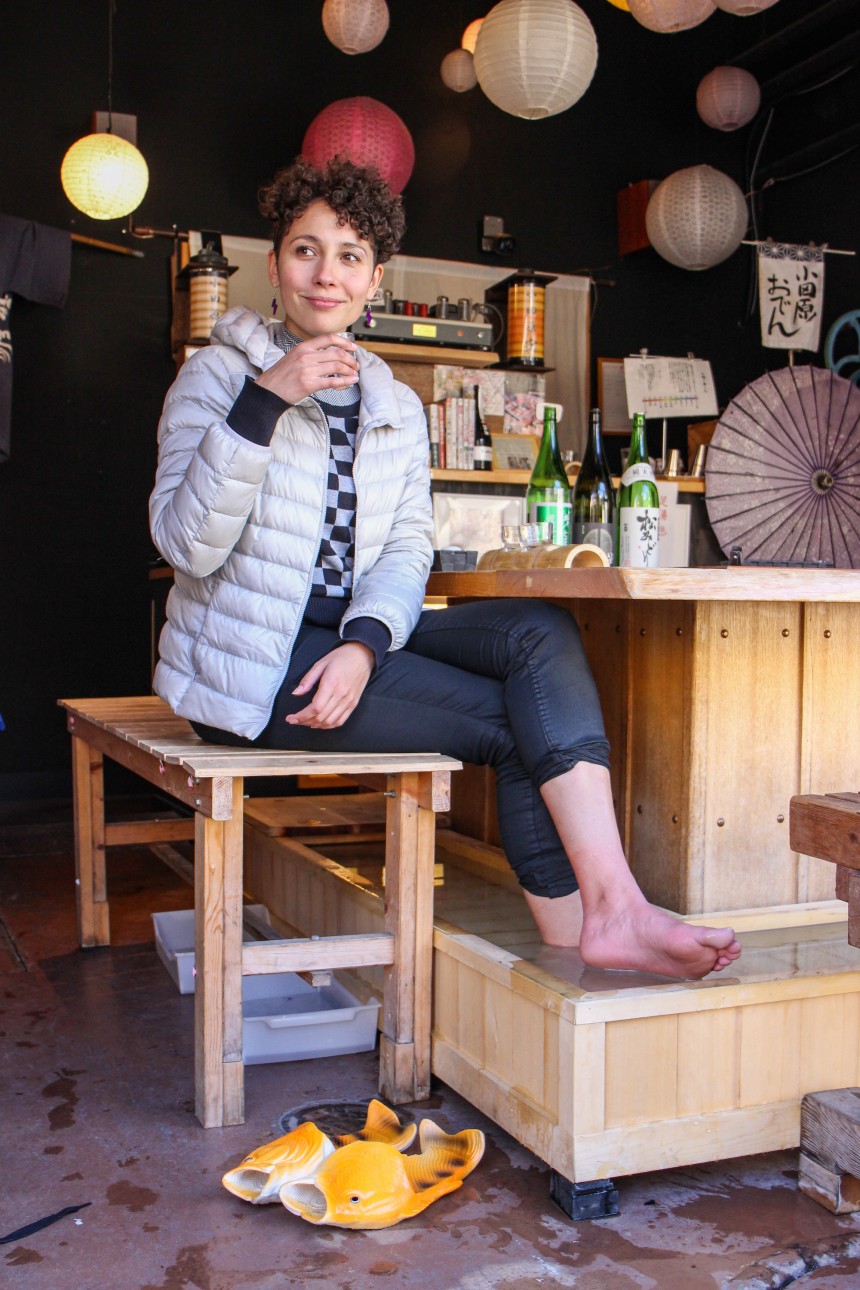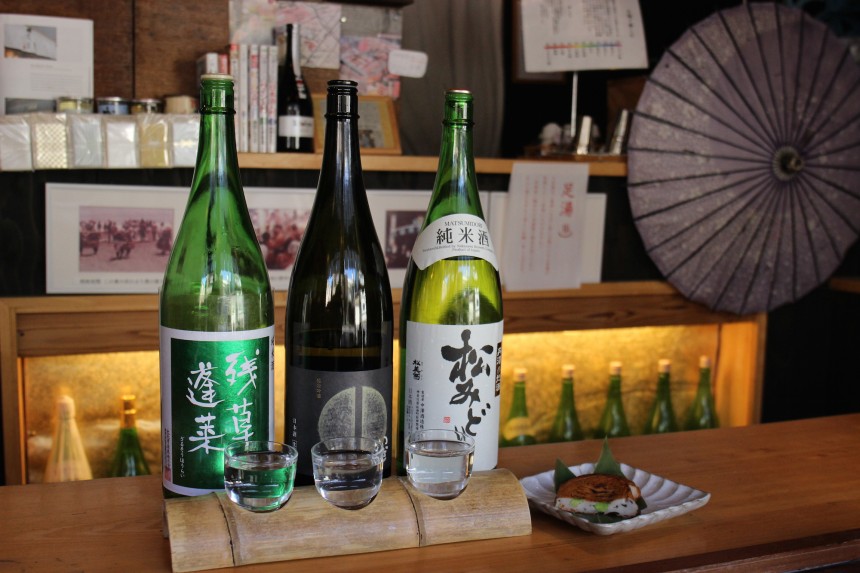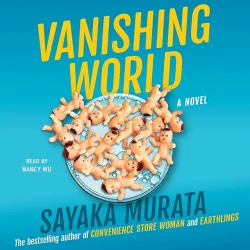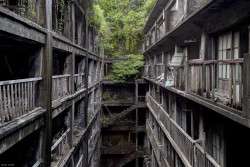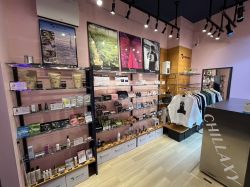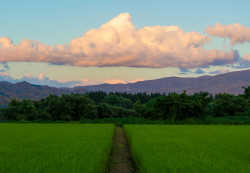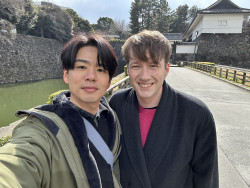
Nestled between the mountains of Hakone and Sagami Bay, Odawara is known for its charming streets, cherry blossoms, and, of course, its emblematic castle. Yet just like the stealthy ninja that operated throughout the town in the 16th century, its shadowy history hides a few surprises.
Jump back 500 years in time and Odawara was one of the most important towns in the entire Kanto region in the east of Japan, all due to one enigmatic character — Hojo Soun. Little is known about his early years, but this mysterious samurai rose up in 1495, conquering Odawara Castle and establishing the town as a stronghold from which he and his successors controlled large parts of Japan for the next 100 years, during Japan’s infamous Sengoku or Warring States period (c.1467 – c.1615). So successful was his campaign, he is considered by some historians as the first Sengoku Daimyo — a powerful feudal lord who ruled over the divided region. After the rule of five generations, the Hojo clan was finally overthrown in a massive siege on the castle in 1590 by Toyotomi Hideyoshi – a victory that signaled the end of the Sengoku period and made the town a significant location that bookended one of the most tumultuous times in Japanese history.

Nowadays, Odawara is a laid-back city of nearly 200,000 people. It prospered during the Edo period (1603 – 1868) as a post station on the Tokaido, a key highway connecting Edo (now Tokyo) with the former capital of Kyoto, and still maintains excellent access: it’s just over an hour from Tokyo by express train, or 30 minutes by bullet train. Close to the popular mountainous town of Hakone, it’s a stone’s throw from some of Japan’s best hot springs and spectacular Mount Fuji views. Sitting on the Sagami Bay, it’s also close to several beaches for summer swimming, and naturally, its restaurants serve up some of the freshest seafood all year round.
Small enough to get around mainly on foot, Odawara exudes a friendly neighborhood feeling and offers a doorway into Japanese town life that feels a world away from Tokyo. It’s a treasure trove of traditional stores, operating for 100 years or more, lively izakaya (Japanese-style pubs with small plates) and cafes serving up local produce and sweets, all watched over by the striking silhouette of the castle that holds the key to this historically important area.

Odawara Castle Park
The Castle
Head out of Odawara Station’s east exit and the first thing you will see is the castle tower jutting upwards on the southern skyline and standing as the seventh tallest in the country. Believed to have been first constructed in the 1400s by the Omori clan who were overthrown by Hojo Soun, the poor castle endured quite a lot over its history. It survived multiple sieges but suffered widespread damage in earthquakes in the 1700s, and was almost fully demolished in 1870. The present building is a reconstruction dating from 1960 and is considered one of the best examples of a castle in the immediate Tokyo area. The interior of the five-storied space houses extensive exhibits on the area’s history, including the five generations of the Hojo clan, as well as weapons, armor and other artifacts. The top floor offers spectacular views over the entire Sagami Bay and, on a clear day, you can see across to the Boso Peninsula, the other side of Tokyo Bay.
Adults: ¥510 Elementary and Junior high school students: ¥200
odawaracastle.com
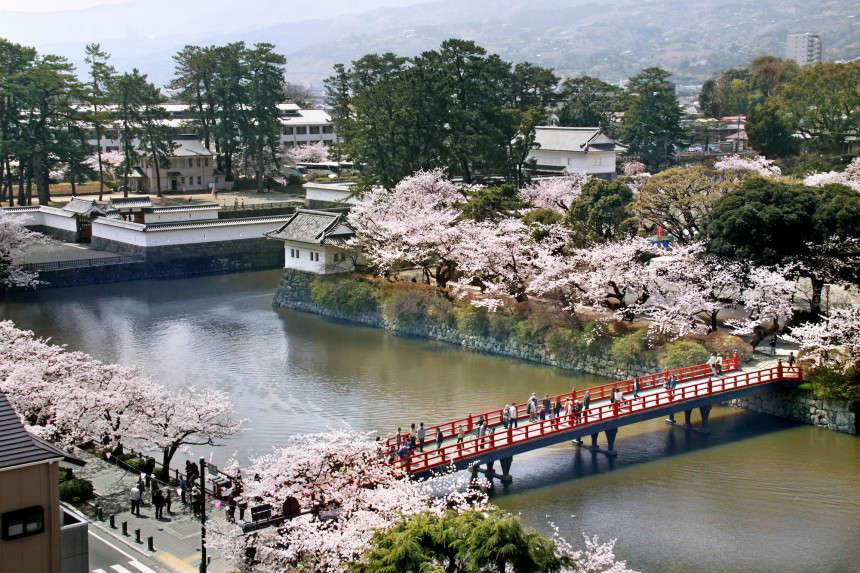
Samurai and Ninja
Stop by the Tokiwagi Gate Samurai Museum where you can see armor and weapons, like katana swords, up close, allowing you to imagine the samurai who used to walk the very grounds you’re exploring. Don’t miss the projection mapping display which takes you on a mesmerizing journey centered on a suit of armor. For an additional fee, you can dress up as samurai or a ninja to get some historically epic pictures around the castle grounds. A ninja costume might just come in handy at the Ninja Museum. Here, you assume the role of one of the mysterious Fuma ninja who served the Hojo clan and must complete an obstacle course while solving riddles. From climbing over walls and finding hidden doorways and panels, it’s more a mini-amusement park than a museum that offers fun for all the family. Culminating with an interactive game at the end — where you fight the final battle together — everyone leaves feeling like a hero of the past.
Samurai Museum odawaracastle.com/castlepark/samurai
Adults: ¥200 Elementary and Junior high school students: ¥60
Ninja Museum odawaracastle.com/castlepark/historicalmuseum
Adults: ¥310 Elementary and Junior high school students: ¥100

Cherry Blossoms and More
With 300 cherry blossom trees, the castle grounds are transformed into an ethereal sea of pink and white from late March to early April. Lining the moat, the reflections are particularly striking when viewed from the Manabi-bashi or Do-bashi bridges. In celebration, the city throws an annual cherry blossom festival, lining the avenues with bonbori lanterns and holding a dazzling nighttime light-up that looks almost too fantastical to be believed.
The sakura season may be brief, but the castle park is well worth visiting for its flora all-year-round as it’s also home to hydrangeas, irises, lotus and wisteria. Stop by the peaceful Hotoku Ninomiya Shrine tucked away among some tall trees and take a rest at the very chic Kinjiro Cafe next door. It is named after Ninomiya Sontoku (Kinjiro), who was born into a peasant family but overcame his low status through self-education, rising up to become a prominent agricultural leader in the Edo period. The cafe has a statue dedicated to him outside and blends seamlessly with its surroundings, allowing you to take a moment and appreciate nature in the middle of the city.

Odawara Experiences
Experience an Authentic Tea Ceremony
Get more than a taste of Japan’s tea culture through experiencing three different tea ceremonies. Head to Matsunaga Memorial Hall, the former residence of Yasuzaemon Matsunaga, who was a master of tea and an avid collector of antiques. Hidden away among some greenery with a beautiful moss-covered Japanese garden, you will feel like you have entered a different era. Inside a traditional room, settle down on the tatami mat as the host lays out the utensils and begins the ritual, first handing you a traditional sweet to prepare your palate for the bitterness of the tea. Your guide will interpret for you during the ceremonies and explain not only the movements required, from bowing to receive the bowl to turning it before drinking, but also the significance of every action of the host and every object used. The seeming simplicity is a rich tapestry of meaning that adds an extra layer of beauty to this ritualistic experience. You will get the chance to experience matcha in two different forms, usucha (light taste) and koicha (heavier taste), as well as a seasonal flower tea, reflecting the importance of seasonality throughout Japanese culture. Also included is a luxury bento lunchbox known as tenshin, where different compartments exquisitely present seasonal ingredients. odawara-tour.com/tea
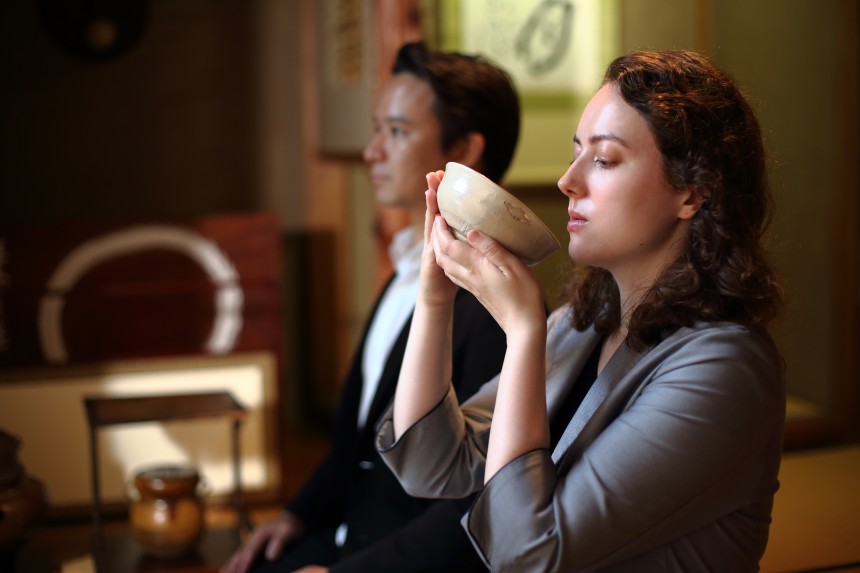
Dine in Luxury with Geisha
One of the most emblematic symbols of Japan, the geisha demonstrates the finesse and dedication required to master the traditional arts; they represent the importance of attention to detail and exquisite aesthetics; and, of course, they embody just the right amount of mystery and intrigue. They undergo rigorous training to entertain their guests, serving drinks, expertly navigating conversation, and performing elegant, mesmerizing dances. Although numbers of geisha are declining, Odawara and Hakone have long had a relatively large number and so this half-day experience offers a rare opportunity to discover this part of Japanese culture. You will first begin by creating a traditional Japanese paper umbrella with one of the few remaining master craftsmen. Then, you will become a guest of honor and witness the true skill of the geisha as they entertain you with music and dancing, and invite you to play some traditional social games. You will take lunch at Daruma, a restaurant with more than 100 years of history and registered as a tangible cultural property. This will be no ordinary meal, you will be served kaiseki, a sumptuous gastronomic experience unique to Japan. Multiple small dishes are expertly presented, offering the best of seasonal and local ingredients. odawara-tour.com/geisha
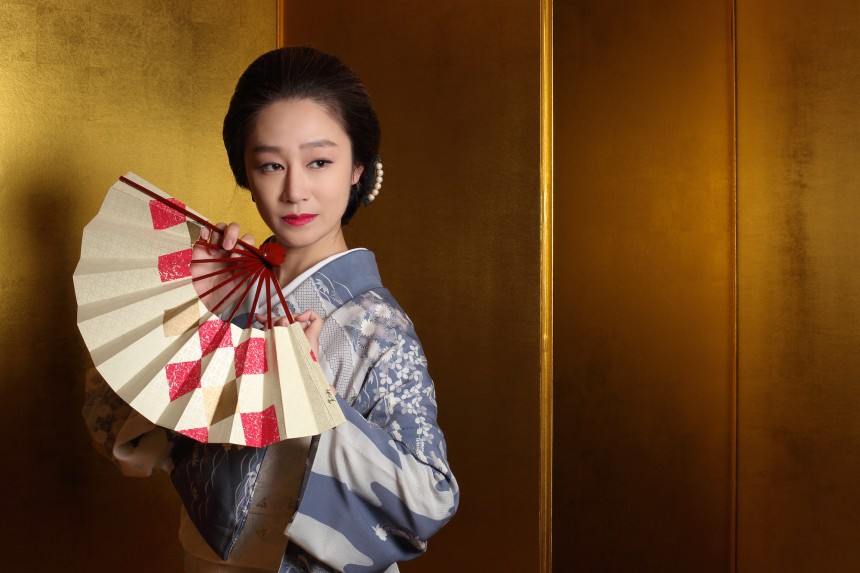
So You Want to Be a Ninja?
Ninja are Japanese cultural icons, but who and what were they? And do you have the skills to be one? The image of ninja melting into the shadows and slipping away into the darkness of the night might not be so far from the truth. They were essentially covert agents that used multiple tactics, from espionage and disguise to surprise attacks. During the Warring States period, Odawara Castle was a key stronghold from which the Hojo clan consolidated their power and ruled over a large area of the Kanto region. It is believed that they were served by a mysterious group known as the Fuma ninja, who played a key role in military operations, infiltrating enemy ranks and passing on important information. This experience takes you to Odawara Castle and gives you the lowdown on the history of these masters of subterfuge, before you get to become one yourself. Change into a ninja costume and strike your best post with the castle as a stunning backdrop. Then, it is time to begin some training. Can you master ninja manners, meditation, and static breathing? These are just some of the legendary techniques you will get to try, see if you have what it takes.
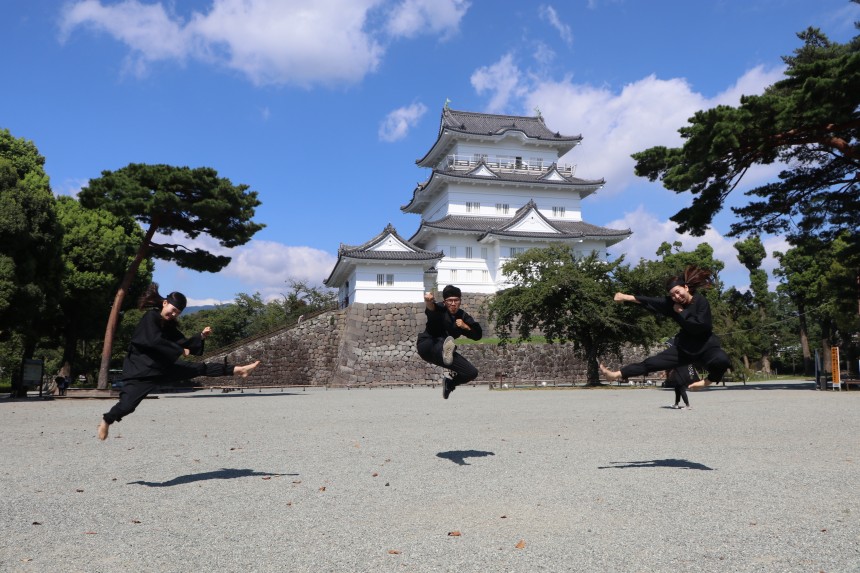
Seikantei
Matcha and sweets in a traditional house
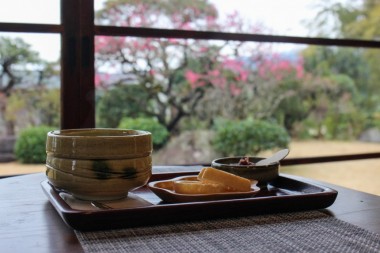
Tucked away on a hill just a few minutes’ walk south of Odawara Castle, Seikantei is like a miniature museum that happens to serve excellent quality tea and sweets. Dating from 1906, the building is a traditional residence in the Sukiya architectural style, featuring tatami mats, sliding doors and beautifully painted panels. The cafe opens up onto the garden with a view of plum blossom and the Sagami Bay. Try the hochicha (roasted green tea) pudding or get the matcha set, thick hot tea in a bowl is served alongside locally made anko (red bean paste) that you can put inside a castle-shaped monaka (wafer), making the experience both fun and delicious.
Aburiya in Gyoson
A “seafood cuisine theme park”
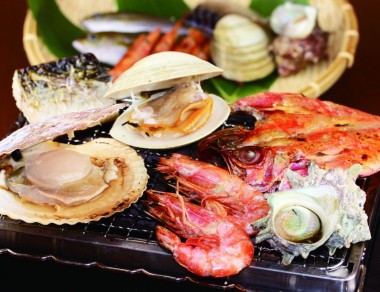
Stroll around the port area of Hayakawa and you will get a sense of just what a rich variety of seafood Odawara has to offer and all the ways it is prepared. Himono – fish dried for preservation – are still common, and you can buy plenty of kinds alongside other snacks and souvenirs. All this is on offer in Gyoson, but the main attraction is the grill-your-own-seafood restaurant, Aburiya. For 80 minutes, you can eat as much seafood as you like, from marinated Japanese Spanish mackerel and sea perch to dried barracuda and sardines, alongside scallops, shrimps, and, of course, some veggies. Gyoson.com
Ajiichi Hojo
Ramen with a local twist
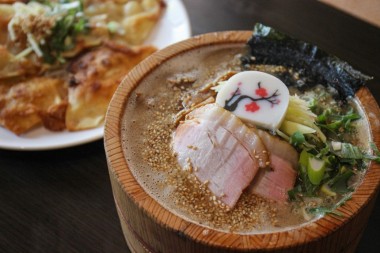
Odawara is famed for its aji (horse mackerel) so what better way to capture the taste than add it to Japan’s worldwide famous noodle dish of ramen? The quality, creativity and care that has gone into every bowl at Ajiichi Hojo should not be underestimated, with tender slices of char siu pork, noodles made from scratch and even a decorative kamaboko (a kind of local cured white fishcake), all served out of a wooden bowl that looks like a barrel. The horse mackerel flavor is used subtly to add a delicate umami to the broth and becomes one harmonious, mellow taste as you work through the dish.
Lacco Ameno
Pizza, pasta and pistachio

In recent years, Japanese pizza has gathered an international following. Proudly representing the craft is Lacco Ameno, run by Kenji Ameno who trained in Naples. He opened the restaurant six years ago and recently expanded to a second space opposite, with waiting staff running plates between the two. Try to sit in the cozy original restaurant where you can watch the chefs work at the brick pizza oven, delivering up classic margherita with buffalo mozzarella, the seafood “Odawara,” or the house special laden with Italian meat and cheeses. Pizzas can be adapted for vegetarians and vegans on request. Don’t miss the pistachio semifreddo for dessert, which is a creamy, decadent delight.
Ryo
Sushi made in front of your eyes at a Japanese-style pub
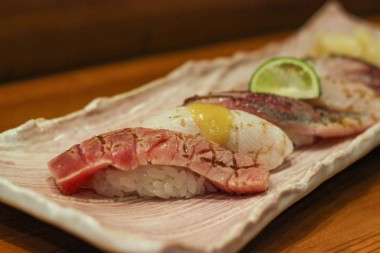
Perhaps the best way to get to know a town in Japan is to head out in the evening to an izakaya, a kind of pub where the focus is more on the tapas-style sharing plates than purely on drinking. At Ryo, seafood is the name of the game with a particular focus on sashimi and sushi. Try to sit at the counter where you can watch the chefs deftly make it. What’s more, you can choose from different styles, including “aburi sushi” which comes lightly seared. There’s a great sake lineup, including several from local breweries, and plenty of other izakaya classics, from fried chicken to fresh salads. d-ryo.co.jp/english.html
Odawara Oden Honten
The tastes of the town in one place
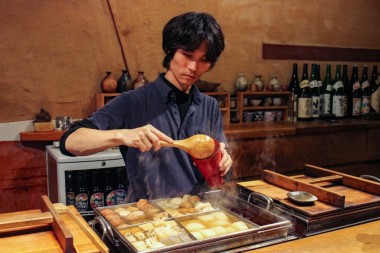
For some truly local cuisine, Odawara Oden Honten is a must. Not only is the interior beautifully decorated, combining the best of modern and traditional design, but most items on their menu are sourced from local producers in town. Oden is a kind of stew, with ingredients, such as tofu, white radish, boiled eggs, kamaboko and other fishcakes served in a light dashi-based broth. Make sure to add some of the special seasonings, including the plum miso made from local plums! If you head here for lunch, try the melt-in-the-mouth gyusuji (sweet, stewed beef) over rice or udon noodles, with a few oden ingredients on the side.
Explore Odawara: Walking Course
Arriving at Odawara Station, take the east exit and from the main road, Nishiki Street, wind left to stroll through Oshare Yokocho. Literally “Stylish Alley,” it is more an anachronistic hodgepodge of bars and small restaurants with some curious Western-style lanterns and street decorations.
Rejoin Nishiki Street and take the right at the end that will bring you down to Ejima tea shop. A family business now in the 17th generation, it was founded in 1661 and originally sold salt, before expanding into paper products for documents and later furnishings, such as shoji (paper screens) and fusuma (sliding paper doors). The original store was destroyed in the Great Kanto Earthquake of 1923, but it has been rebuilt and renovated in early Showa style. Here, you can buy many kinds of tea alongside beautiful teapots and cups.

Continue south along Ginza Street, before making a left at the crossroads. Tucked back from the road, you will find Ishikawa Lacquerware. The craft has its origins in the Muromachi era (1336 – 1573) when abundant wood from the nearby Hakone mountains began to be crafted into lacquer tableware, and later developed into a coloration lacquer technique called irourushi-nuri. The striking red coloration of the pieces also highlights the beauty of the natural grain of the wood. These pieces are often sold to Japanese restaurants but you can take some home for your own dining table.
Head directly south to the main road, the Tokaido, and pop by Nanohana, which specializes in dorayaki, Japanese-style pancakes sandwiched around red bean paste. Nanohana not only has a very cute rabbit adorning their sweet creations, but they pride themselves on making their own anko using the local water. Tip: pick up the red-bean and salty butter flavor and try not to eat it before you get home.
Meander further south down through the streets south until you hit Kamaboko Street. Kamaboko is a cured fish product, often described as a “fishcake” but really needs to be tried to be appreciated. Odawara has a particularly large number of producers. Stroll along and around this area and you can pick up many kinds, including freshly fried versions to munch on the go.
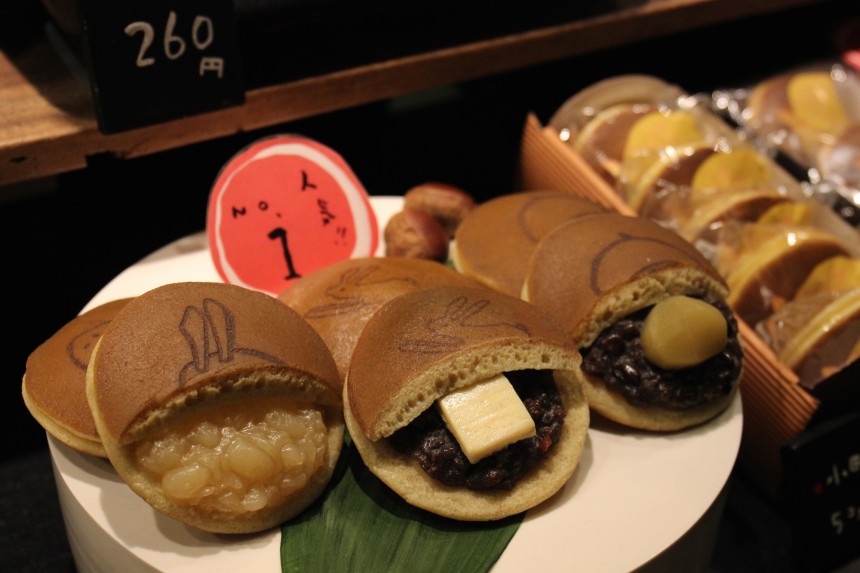
If you’re feeling a little weary or just want an unusual experience, stop at Urokoki: settle around a traditional open stove, and choose some local sake (perhaps a tasting set of three?) along with kamaboko and other snacks, all while taking a foot bath. There is hot water in winter and refreshingly cool water in summer – a perfect way to relax in between sightseeing. Around the corner, you’ll find the store Suzumatsu, which has created a unique cheesecake version of kamaboko. The surprising combination works incredibly well, and it is a perfect example of how Odawara might be steeped in tradition but local stores are not afraid to innovate.
Once you’re done exploring, continue heading west along the main road. Before long, you will spy the impressive building that houses Uirou, which sells a steamed rice cake by the same name that is similar to mochi and lightly sweet. The business began around 600 years ago and is now, incredibly, in its 25th generation. Do not miss out on trying the brown sugar version which is rich, mellow and eternally tempting. You can take away or enjoy your confectionery with a drink in the cafe space.
Just a few paces further is the enchanting Chinriu, an umeboshi (pickled plum) specialty store. The interior is like a museum with wooden shelves and jars upon jars of umeboshi on display, the oldest dating from 1868 and apparently still edible! There is also local umeshu (plum wine) on sale and you can sample some before you buy.
Take a right at the next traffic lights and you will soon pass the Shonan Cookie vending machines. Not a vision from a childhood dream, there is literally an entire booth full of confectionery vending machines with even lockers stashed full of biscuits. Unleash your inner child and spend your ¥100 coins unwisely as the cookies will make great souvenirs with a great story.
Cut through the castle grounds and cross either Meganebashi Bridge or Gakubashi Bridge to join the main avenue, Ohoribata Street. Head straight up towards the station area until you come to a cafe called Mame no Ki. A kissaten (Japanese-style coffee shop), it’s straight out of Japan’s Showa era with dark wooden panels and siphon coffee made at the counter and served in bone china cups. The “cappuccino” comes with a cinnamon stick and topped with cream. Bonus information: when the clock strikes 5pm, it plays a rendition of “My Heart Will Go On” from the movie Titanic. What better way to end a busy sightseeing day than caffeinated, refueled and refreshed?
More details at odawara-guide.com/metropolis.

Kinjiro Cafe: hotoku.jp/kinjiro-cafe
Matsunaga Memorial Hall: city.odawara.kanagawa.jp/public-i/facilities/matsunaga
Daruma: darumanet.com
Uirou: uirou.co.jp
Ejima: ejima.net
Chinriu: umeyorozu.info
Mame no ki: odawara-mamenoki.com
Suzumatsu: suzumatu.o.oo7.jp
Urokoki: urokoki-kamaboko.com
Ishikawa: ishikawa-shikki.com

